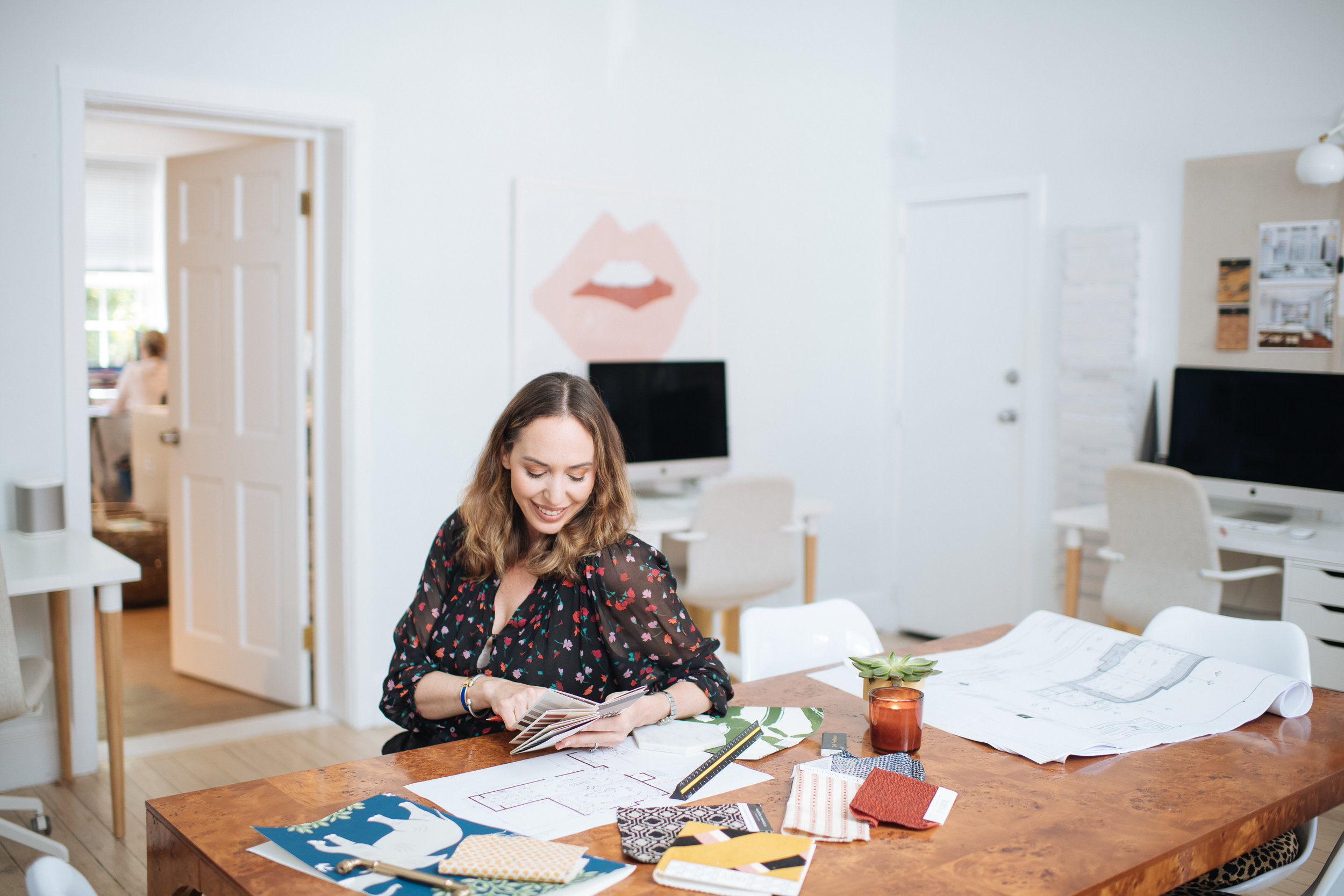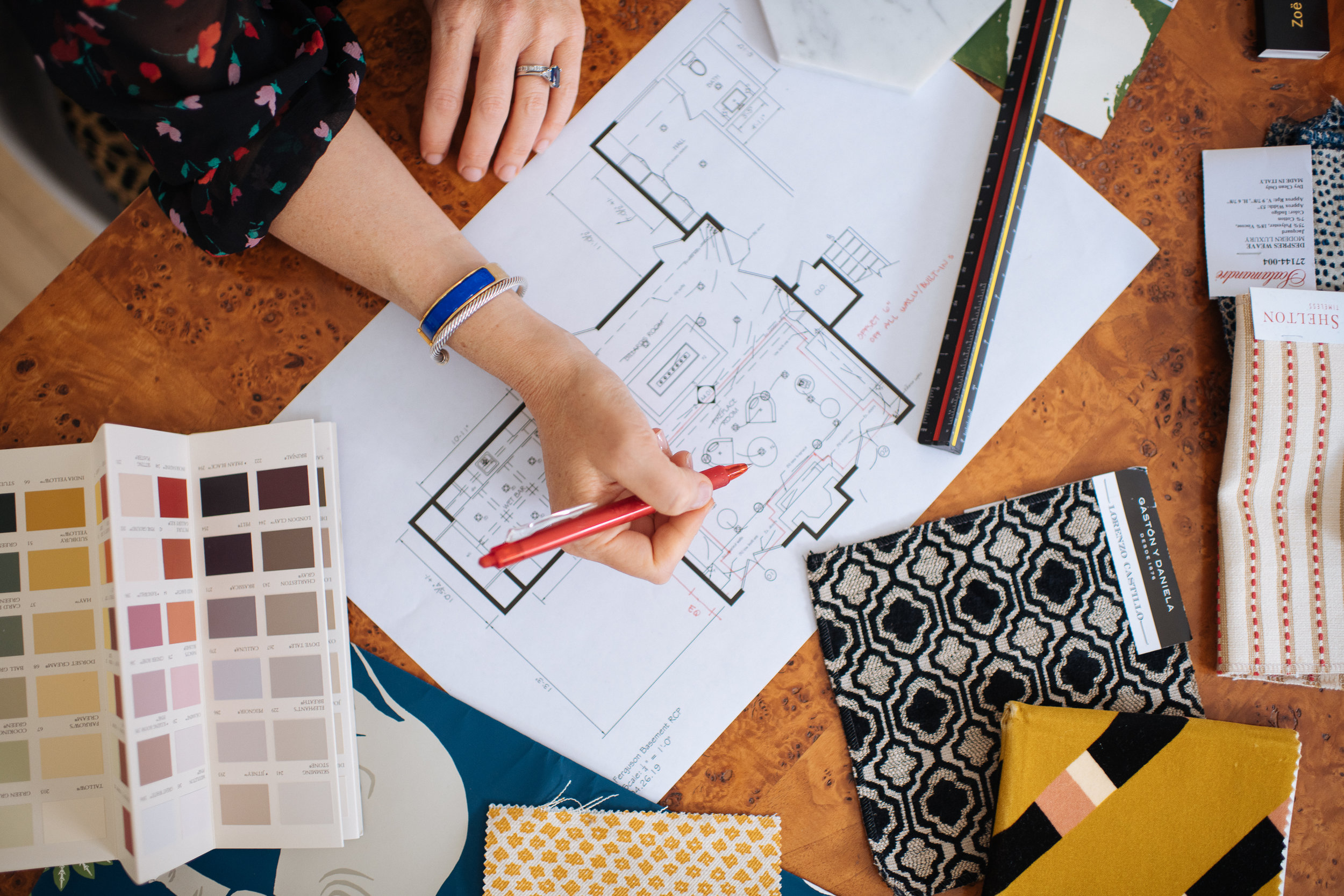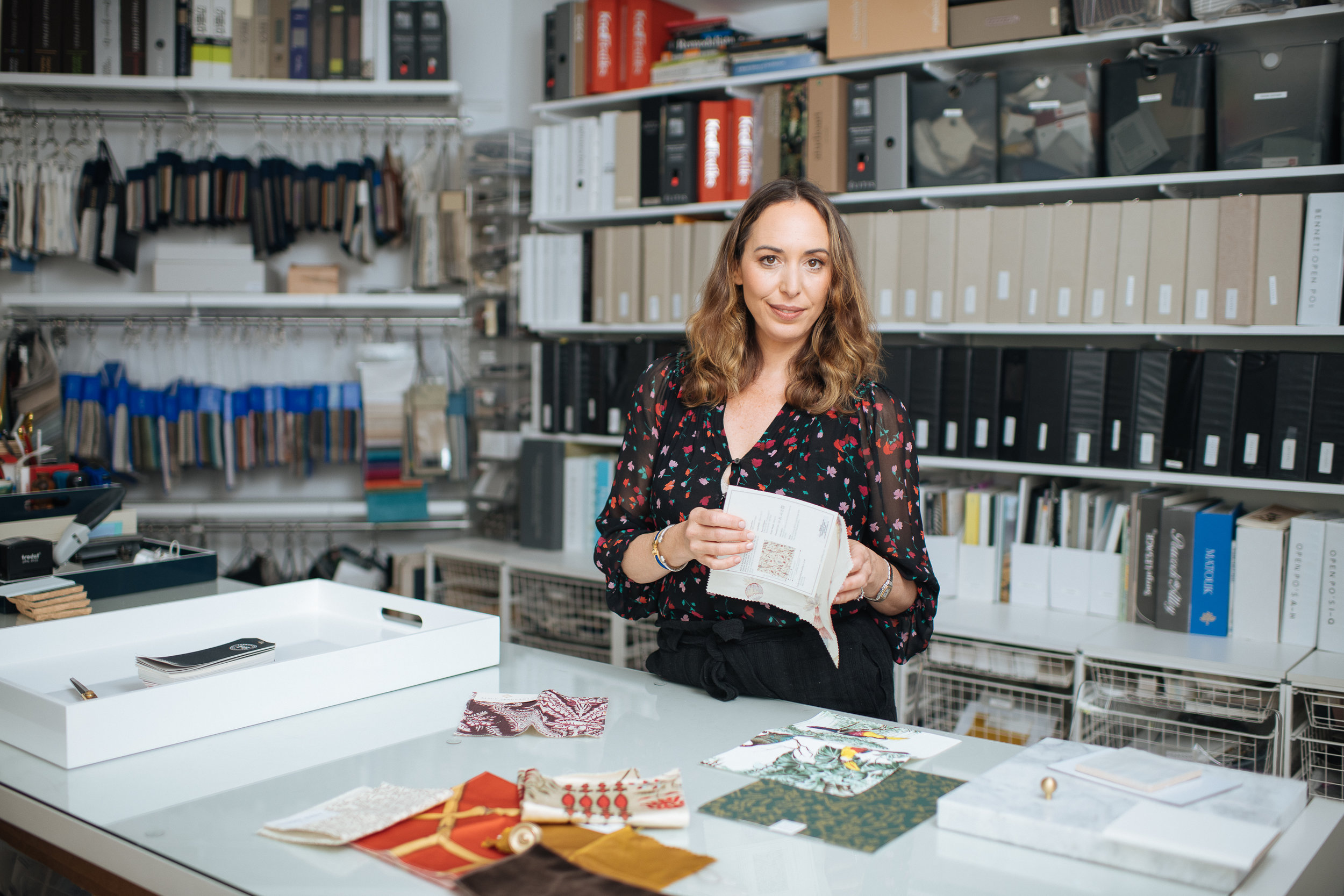‘I Prefer to Work in Historic Environments’
Zoe Feldman
Zoe Feldman Design
1052 Potomac St NW
Zoe Feldman didn’t know what she wanted to do with her life; only, what she didn’t.
She moved to New York City for a career in advertising right out of college, but quickly discovered it wasn’t the right fit. It took her mom and best friend to point out the obvious.
‘I was soul searching and they were both like, ‘You’ve always been into interiors, why don’t you think about it?’ I never really thought about interior design as a career. My mom had a decorator when I was growing up, but I never put the two together, that I could make a living designing interiors. I started thinking about fashion, but after talking to a few people, I thought interior design sounded more interesting.’
Zoe had her pick of design schools in New York City, ultimately enrolling in Parsons. By the time she graduated and got a job with Mark Hampton on Madison Avenue, Trading Spaces was just debuting.
‘Interior design is so hot now, but not in the 90s. Trading Spaces asked my old boss to audition for it. There’s always been a bit of the mommy decorator, but that show really exposed people to this idea of interior design being a career.’
After a few years in New York, Zoe moved to Georgetown and launched Zoe Feldman Design out of her townhouse. Her business has since expanded to its own office space on Potomac Street, but Zoe says she has no plans to leave the neighborhood—finding daily inspiration in Georgetown’s architecture.
‘Georgetown has a certain style to it. It’s beautiful and has a neighborhood feeling, and we use the Cady’s Alley design showrooms often. I’ve been deliberate about working here.’
Although the majority of Zoe’s clients live within a 10-mile radius, her work spans beyond the DC-metro area, with projects in New York City, the Hamptons, and South Florida. Every project and client are unique, but the foundation of her design aesthetic is still largely influenced both by the mid-century modern house she grew up in on the Emerald Coast of Florida, and her early years at Mark Hampton.
‘My style has always been very modern, but then when I worked in New York, our projects skewed more traditional in nature. This experience very much elevated my style, and made it a little more interesting and juxtaposed. Everything I do has a modern edge to it because that’s my natural aesthetic, but because I was trained under a traditionalist, my approach has shifted over the years into a classic modernism.’
Zoe says her clients are edgier than the typical Washingtonian, though she’s observed an overall shift in taste and design appreciation among the city’s younger urbanites. ‘Old-world Washington’ still exists, but she feels most inspired by the juxtaposition of historic environments with updated interiors—reflected in her own 93-year-old house, and some of her favorite client projects.
‘We did a beautiful Capitol Hill restoration that I really enjoyed because it had a lot of tension in it. It had historic bones, and the client was very committed to acknowledging and honoring those bones. We have a sustainability arm, and it was fun to see that as they discovered wood, they would repurpose it elsewhere in the house in an intentional way. The furniture was very minimalist, the lighting was modern, and they had a very contemporary Poggenpohl kitchen in this historic townhouse. It had a lot of interesting elements that flowed well together, and I felt very inspired by it.’
Sustainability can be as simple as repurposing old wood, yet many clients still think of solar panels and LEED-certification as the only means to that end. Zoe says more exposure and discussion is required to move that conversation forward.
‘Clients think of sustainability like, ‘I finished my lunch, how should I recycle it’—not, ‘How can I think of my renovation in a more sustainable way?’ It can be as simple as demoing a kitchen and having someone come over and take away those materials, instead of putting them in the landfill. It’s way simpler, and we’re doing our best to push that to the front of a client’s consciousness when designing. One of our goals as a firm is to find ways that we can do our part in making this world a better place, such as repurposing and recycling instead of adding to waste.’
In every aspect of design, real-world exposure is key.
Prior to having children, Zoe was at a loss for child-friendly design. Her one- and three-year-old daughters completely changed her perspective.
‘When people asked me about babies, I was like, ‘I don’t know—maybe not a white sofa?’ Now I have this wealth of knowledge when it comes to how to have a pretty house and have babies, and that’s probably been the biggest shift in my design. I believe that if you use natural materials, it’s fairly simple to live in a baby-proof land. If you can detach from your need to have everything stay exactly as it was installed, your life becomes a lot easier and you can live with more beautiful things.’
For those less inclined to consider natural fibers and ‘human-proof’ natural stones, like quartz, Zoe says two decades of technology have made nearly every fabric and carpet treatable. Then again, most clients aren’t sure how to articulate what they really want.
‘Most people like things but they don’t even know what that means. I like this room but I have no idea how this room could be my room. Despite Instagram and Pinterest and the design shows, I don’t think it’s given anyone a better design vocabulary, or helped them communicate their wishes. It’s just a lot more access to photos. But we speak through color a lot through inspirational photos, and the building will also ask for a lot of what it needs.’
Without much client direction, Zoe’s general inspiration still comes the old-fashioned way—‘the art of receiving design magazines and dog earring, never to return to the page’—and through travel, nature, art, and fashion. Design shows don’t make the list.
‘I don’t dislike them, but I work in design and the last thing I want to do is go home and watch a renovation show. I go home and watch Bravo and the Housewives.’
Yet more often than not, interiors are on the brain. As design sensibility inches forward, Zoe says she’s excited to see more honed materials, chalkier paints, and imperfect tiles and stones, with an emphasis on raw rather than glam.
‘It has a rooted historic feel, and I like that there’s a big lean toward vintage and antiques—partially because of the sustainability element. There’s a greater appreciation for it now, and you don’t create these one-note spaces of brand-new furniture. Things are also continuing to be more global. Now with such an accessibility to travel, it’s naturally bleeding into design. As you travel, you acquire things that make your home more layered and lived in.’




